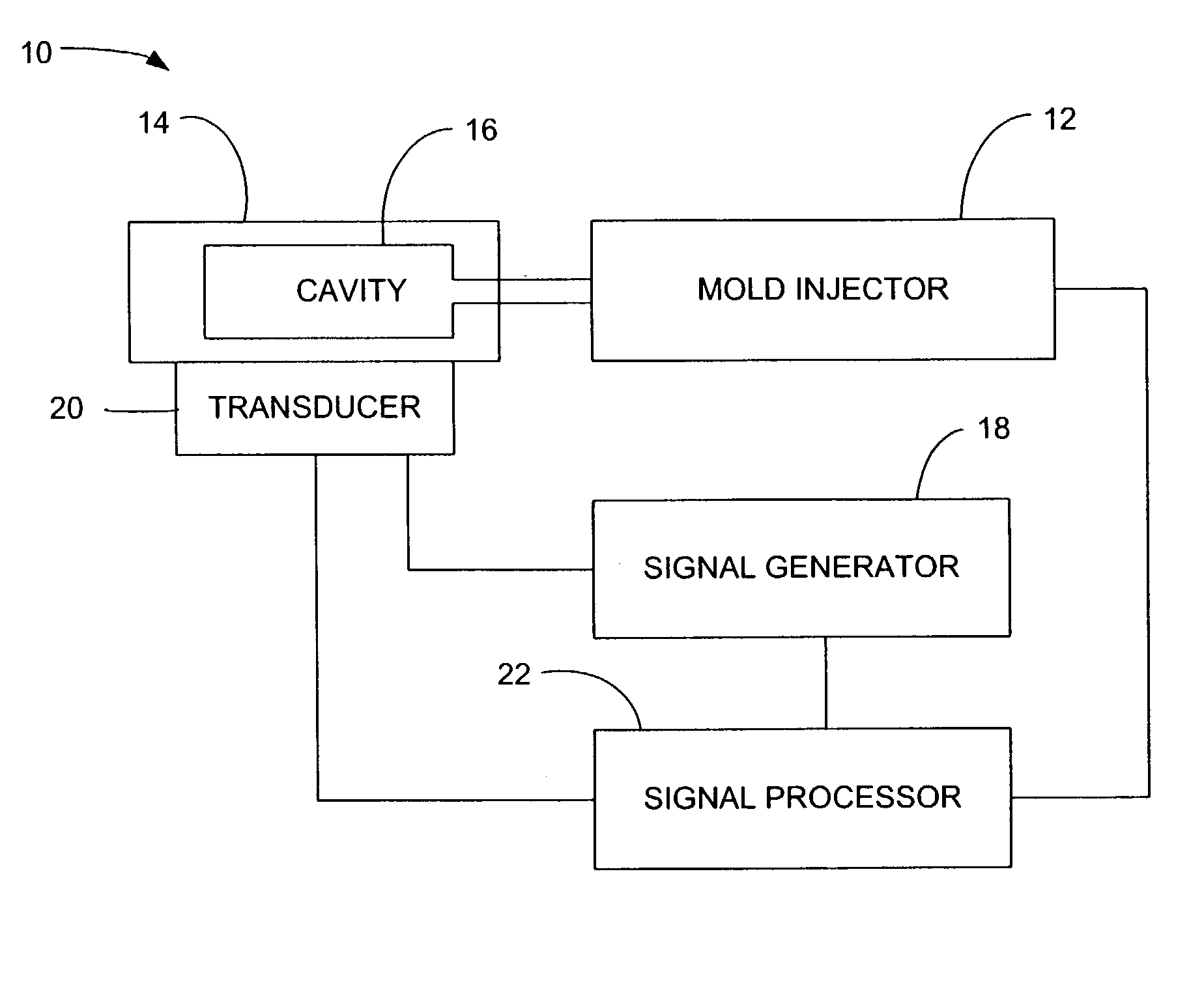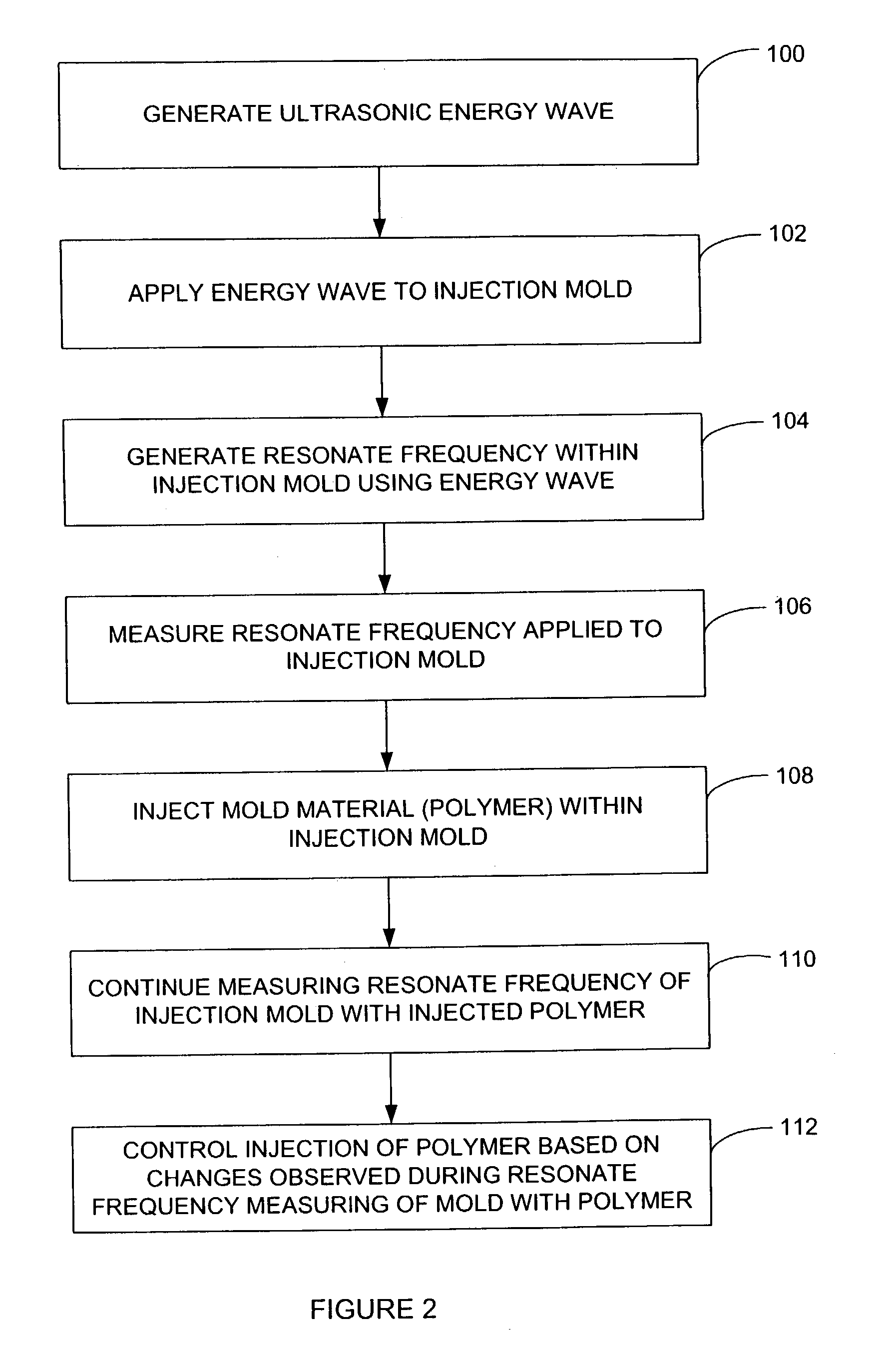Continuous wave ultrasonic process monitor for polymer processing
a technology of ultrasonic process monitor and polymer processing, which is applied in the direction of vibration measurement in solids, heat measurement, lubrication elements, etc., can solve the problems of high equipment cost, sensitive equipment, and difficulty in sensing these variables
- Summary
- Abstract
- Description
- Claims
- Application Information
AI Technical Summary
Benefits of technology
Problems solved by technology
Method used
Image
Examples
Embodiment Construction
[0024]The present invention introduces continuous wave ultrasound monitoring techniques that typically utilize a piezoelectric crystal to generate and detect ultrasonic energy applied to a test item. When the piezoelectric crystal is excited by an imposed electric voltage, the crystal changes shape, which produces a vibration. The vibration propagates through the thickness of the object to which it is attached, generating reflections at selected interfaces, such as between the crystal, the object, and any other layer touching approximate on another. The magnitude of the reflections is a function of the mismatch in material properties between the two interfacing materials. The reflected energy propagates back to the crystal, causing the crystal to vibrate, which then produces an alternating voltage. As suggested by the name continuous wave ultrasound, the crystal utilized in such a system vibrates continuously using a sine wave or other periodic waveform. This is in contrast to a con...
PUM
| Property | Measurement | Unit |
|---|---|---|
| acoustic energy | aaaaa | aaaaa |
| resonant frequency | aaaaa | aaaaa |
| acoustic energy frequency | aaaaa | aaaaa |
Abstract
Description
Claims
Application Information
 Login to View More
Login to View More - R&D
- Intellectual Property
- Life Sciences
- Materials
- Tech Scout
- Unparalleled Data Quality
- Higher Quality Content
- 60% Fewer Hallucinations
Browse by: Latest US Patents, China's latest patents, Technical Efficacy Thesaurus, Application Domain, Technology Topic, Popular Technical Reports.
© 2025 PatSnap. All rights reserved.Legal|Privacy policy|Modern Slavery Act Transparency Statement|Sitemap|About US| Contact US: help@patsnap.com



